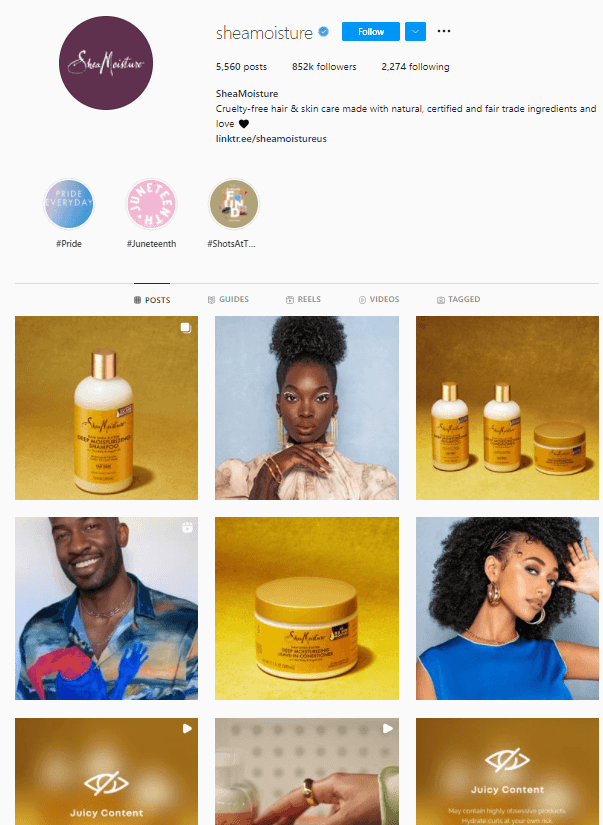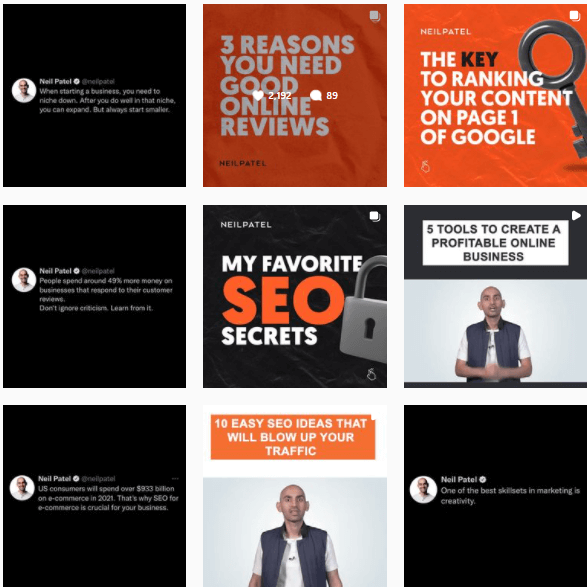If you’re still on the fence about social media, just consider the fact that 91.9% of U.S. marketers in companies larger than 100 employees were expected to use social media for marketing purposes.
Chances are that you’re already in the process of creating a social media marketing strategy but you might be stuck on the content side of things.
Before we get to the juicy information, why should you create a social media content strategy?
Why do you need a social media content strategy?
In a nutshell, a social media content strategy helps you drive meaningful results on social media for your business. As with basically every marketing venture, a roadmap ensures that you aren’t left floundering about without direction – wasting precious resources like time and money.
Furthermore, not spending enough time on a solid social media content strategy can lead to alienating your would-be customers. A GoodFirms Survey found that 85% of people have unfollowed a brand before, with irrelevant content being the second-largest reason for unfollowing.
Though there’s no one size fits all strategy that will work for all brands, the steps we list in this article will guide you through creating a tailored content strategy that’s sure to win.
How do you develop a social media content strategy?
Set goals
You’ve probably heard this one before. Setting goals for your social media profiles is important for a couple key reasons.
- The content you create will vary depending on your goals. A lead gen content strategy is different from a brand awareness one.
If your focus is converting leads on social media, for instance, chances are your posts will involve more CTAs (call to actions). Setting goals early on ensures that your messaging stays consistent and your content remains relevant.
- Focusing on one goal makes it easier to measure KPIs (key performance indicators). As with all digital marketing efforts, data is everything.
You can’t know how effective your social media strategy is if you don’t know which metrics to track. Keeping with the previous example of converting leads, you’d probably be checking Assisted Social Conversions in Google Analytics, while your follower count wouldn’t be paid attention to.
Here are some of the main goals you can set for social media:
- Boosting brand awareness
- Community building/customer service
- Lead generation
- Conversion optimization
You can use Kontentino’s analytics tool to get a detailed, unified look into how well your social media is performing.
Figure out your audience
Another key to your social media content strategy’s success is understanding your target audience to a creepy degree.
While there are a myriad of different ways you can go about conducting audience analysis, there are two main forms of analysis that we’ll go over.
- Quantitative analysis
Quantitative research refers to statistics and hard facts like demographics data, audience affinity, interests, etc. Data from quantitative research can give you a broad yet important overview of who your customer is. Things like age, gender, location, language, income and education are crucial to understanding what kind of content will resonate, but your research shouldn’t end there.
- Qualitative research
Qualitative research focuses more on the opinions, feelings and behaviors of members of your target audience. When conducting qualitative research, get creative. Think about where your audience is most likely to hang out.
If your company sells hair products, check out different hair-related subreddits, Quora threads, YouTube comment sections. Take note of how people talk, the questions they ask, brands they recommend and experts they refer to.
Qualitative research lets you uncover deeper insights than hard data can provide.
Here are a few of the best tools for audience analysis:
1. Google Analytics

The Audience section in Google Analytics can give you data like:
Demographics. Age, gender, location;
Affinity Categories that show what topical categories your audience is interested in;
In-Market Segments that show the industries, markets and product categories your audience searches for.
2. Facebook
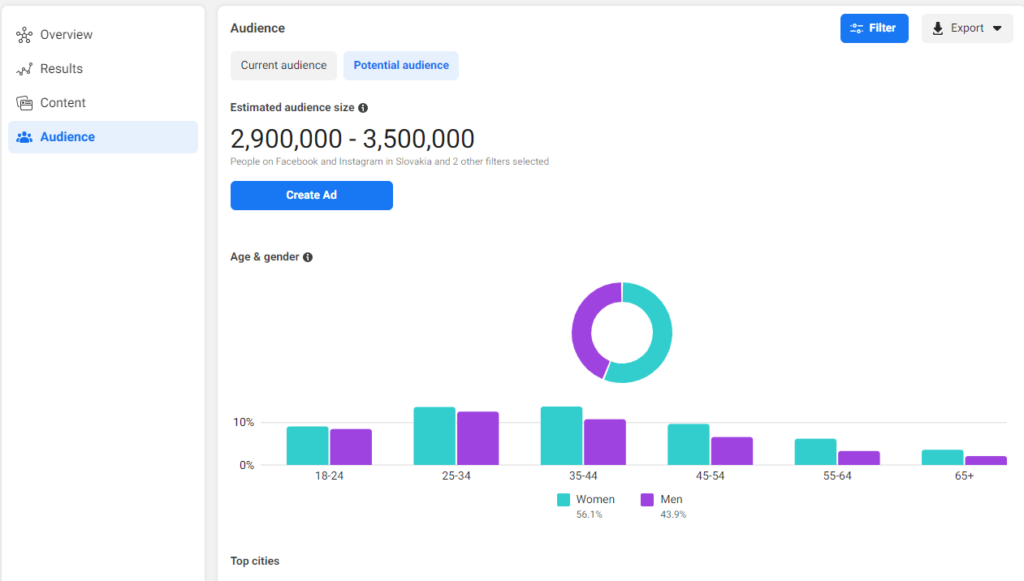
Head to the Facebook Business Suite and open Audience Insights. From there you can see your current audience (if you’re just getting started you may not see any data) as well as your potential audience. You can filter things like demographics, language and location data.
In addition to Audience Insights, you can use the Facebook Ads Manager to uncover different interests your audience might have.
Open Ads Manager, click the green Create button, select a Campaign Objective (it doesn’t matter what you select since you won’t be publishing the campaign), and head to the Ad Set level. There, head to Detailed Targeting and select Edit. Type in different keywords relevant to your niche. Most options will have interest subcategories your audience might fit into.
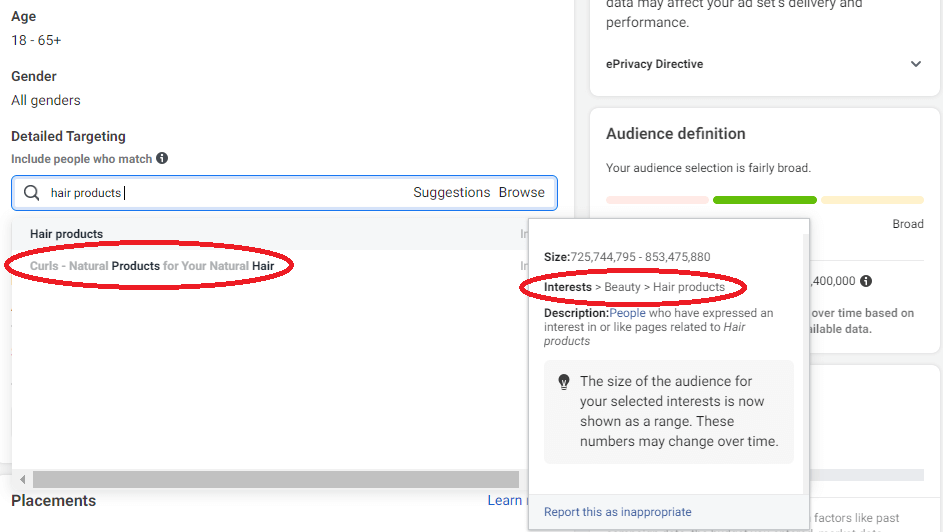
3. Reddit
Reddit is one of the most powerful qualitative analysis tools out there. Although the social media giant has an advertising tool that comes with a suite of analytics options, Reddit’s true power for audience analysis comes from combing through various subreddits, reading the threads and uncovering behavioral insights.

If you’re in the business of hair, go through the dozens of hair-related subreddits and uncover what problems people have with their hair, what products they recommend, etc. Jot them down and come up with social media content ideas from what you find.
Check out your competition
You know the saying “If it ain’t broke, don’t fix it”? The same applies to your social media content strategy. Of course, you should never copy your competition post for post, but if one of your competitors is killing it on social media, taking inspiration can give you a much-needed head start.
Start out by identifying your biggest competitors. If you haven’t conducted competitor research before, here’s a quick step-by-step guide.
Head to Google and search for a keyword relating to your industry, like “Hair care products”
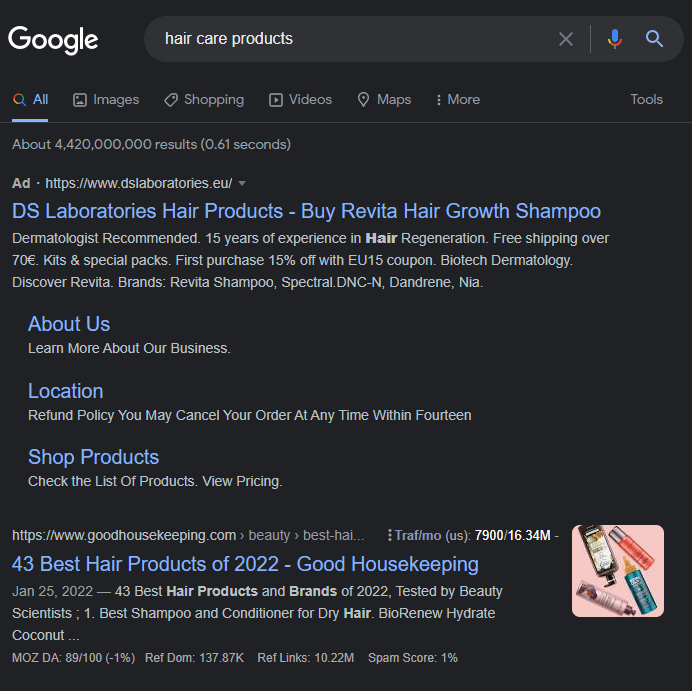
If you get any ads, click on them. If your competitors are continually running Google ads, chances are they have the budget (and thus the revenue) to pay for traffic.
Check any tier lists that rank near the top of the SERP.
- Look them up on social media. For this example we’re using Shea Moisture, one of the brands that came up frequently in top ranking tier lists around the keyword “hair care products”
Spend some time on your competition’s profile and look at the layout of their feed, how often they post, how they utilize stories, what Instagram Business Tools they use (action buttons, Instagram Shopping). Find five of their highest performing content in terms of engagement and find a common theme among them.
For our example, we found that high quality videos bring the most engagement for Shea Moisture.
Nail your branding (tone, voice, visuals (hex codes, typography, etc.)
In order to find success with your social media content, you need to know your business.
What defines your brand identity and how does it differentiate from the others? What does it seek to achieve? Who and how does it want to impress?
The clearer you are about your brand identity, the easier it will be to craft the right message and the easier it will be to really resonate with your audience.
Chances are you already have your brand book created, so all you need to do now is apply that branding to your social media content.
On Instagram, your Feed is the first thing people see when they land on your profile. First impressions matter, and the theme of your profile can make a big impact.
Think of ways to implement your brand colors and typography in your posts.
Don’t forget that any Reels you create will also show up on your profile, so make sure your Cover also aligns with your branding parameters.
If you’re focusing more on writing-based platforms like LinkedIn or Twitter, start creating copy guidelines. Think about your brand voice and tone. This is where the research you did on your competition and audience will come in handy. Consider how your audience talks online and how your competition communicates with them.
Make adjustments in your copy accordingly (like replacing formal vocabulary with more relaxed works) and figure out ways you can stand out while still resonating with your target audience.
Set up a content calendar
Once you start creating content for social media, you’ll quickly realize that keeping track of all the images, videos and captions is a full-time job. Furthermore, how often you post can have a big impact on your reach and engagement. Check out this guide to learn the best times to post on social media.
Luckily, Kontentino offers a robust editorial calendar that lets you plan, schedule and publish content for social media.
Staying organized with a content calendar frees up time that you can allocate toward creating stunning content and engaging with your audience.
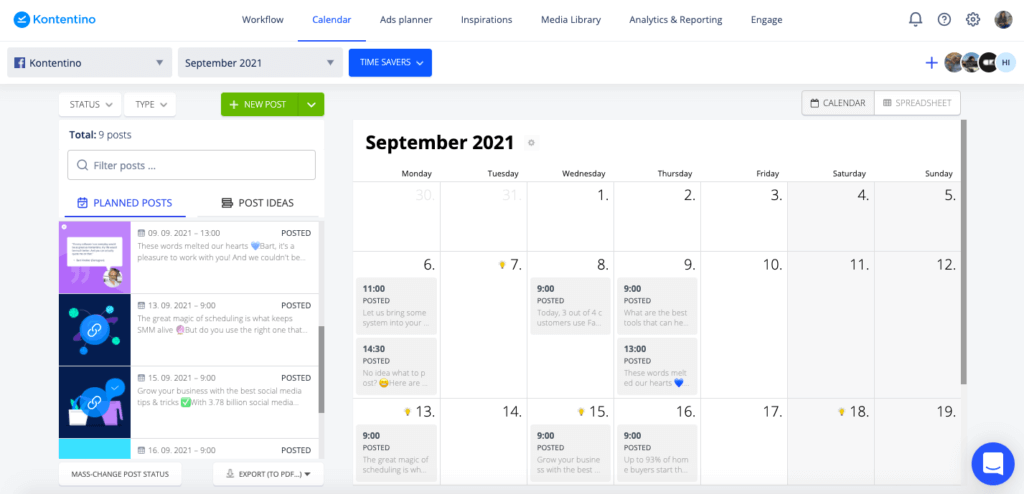
Get your team on the same page
Another important aspect of creating content for social media is team cohesiveness.
Social media isn’t a one-man show, you need copywriters, graphic designers and social media managers.
Kontentino offers comprehensive social media collaboration solutions for teams. Assign tasks, approve posts, track changes and get inspiration from clients, all in one place.
Effective team communication ensures that resources aren’t wasted and mistakes don’t happen.
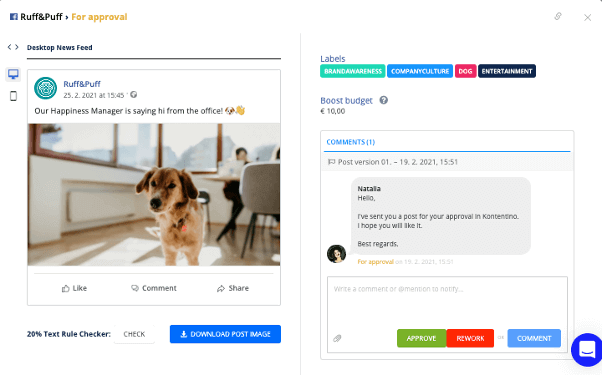
Putting it all together
Creating content for social media is a long-term investment. Having a well thought-out social media content strategy is a start in the right direction.
It might not always be easy, but as long as you stick to your guns, produce content that your audience loves and take a data-driven approach, you’ll succeed.

